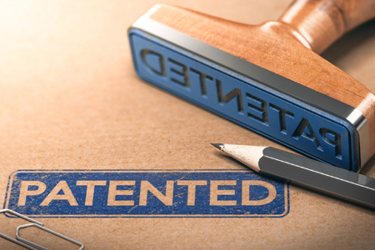Method-of-Treatment Patents: Increasing Value & Risk
By Michael Harlin, Emer Simic, and Tom Campbell

Patents on methods-of-treatment using pharmaceuticals are being asserted in broad ways against a variety of parties, with potential liabilities of hundreds of millions of dollars. Method patents can be obtained not only for new indications but also for other discoveries made after the initial approval, like dosing regimens. These post-marketing discoveries ultimately may end up in the drug’s label. This complicates efforts by generics because the generic’s label must be the same as the brand’s label (with limited exceptions). Generic companies historically used label “carve-outs” to avoid infringing a method-of-treatment patent claim. The viability of that historical practice has been called into doubt given recent legal developments.
Most questions of patent infringement for a generic drug are litigated before the generic is approved for marketing. When the generic files an Abbreviated New Drug Application (ANDA), the Hatch-Waxman Act allows the innovator or brand pharmaceutical to file a lawsuit if it believes its patents will be infringed. But in some circumstances, such as when a method patent is granted after the ANDA’s approval, the brand can seek monetary damages for lost sales due to infringing uses of the generic, and not just from the generic manufacturer.
Not Just The Label
In recent litigation involving the cardiovascular drug Coreg (carvedilol), the generic (Teva) was liable for induced infringement of the brand’s method patent, despite Teva’s attempt to carve out the patented method-of-treatment from its label. GlaxoSmithKline LLC v. Teva Pharmaceutical USA, Inc., No. 2018-1976 (Fed. Cir. Aug. 5, 2021) (Coreg II). After Coreg II, generics face greater uncertainty over liability for induced infringement for past and future labeling carveouts of methods of using reference-listed drugs. We expect to see a rise in litigation arising from carveouts that were previously considered low risk.
The Coreg II court acknowledged that generics cannot be liable for merely marketing and selling under a “‘skinny label” that carves out the patented indications or for merely noting that its product is rated as therapeutically equivalent to a brand-name drug. But the court held that Teva had failed to fully carve out the patented use from its product label, because its skinny label still encouraged use for a different but overlapping indication, and various portions of its skinny label strung together described the steps of the patented method. Thus, in addition to carving out the patented use as described in the Orange Book use code, generics will now likely critically assess if there is any overlap between the remaining indication on the label, the description of use of the drug in the label (e.g., in the clinical or warning sections), and the patented indication that the generic intended to carve out.
The Coreg II case is not a pre-generic approval suit under the Hatch-Waxman Act; Teva’s generic drug had been on the market for years, which led to its liability of $235 million in damages. But the post-approval circumstances also led the court to look beyond Teva’s label and consider marketing materials and statements from Teva’s employees, finding that these provided additional evidence of Teva’s intent to induce infringement. The court identified two relevant Teva press releases: The first stated that Teva’s generic drug was an “AB rated generic equivalent to GSK’s Coreg tablets” and “are indicated for the treatment of heart failure and hypertension.” The second stated that Teva intended to “market its generic version of GSK’s cardiovascular agent Coreg (carvedilol) tablets.” According to the court, although promoting Teva’s drug as A/B rated alone was not sufficient evidence of intent, Teva’s statements that its drug was equivalent to Coreg and indicated for the treatment of heart failure were sufficient to demonstrate intent to infringe because of the overlap of heart failure with the carved-out indication of congestive heart failure. Teva’s use of the word “cardiovascular” was deemed evidence that Teva intended its generic version of the Coreg product to be used for all cardiovascular indications, including the carved-out indication for congestive heart failure. Thus, Coreg II suggests that generics seeking to avoid liability should limit the scope of their marketing materials to describing the generic product as A/B rated. Alternatively, since generic products are interchangeable at the pharmacy and their sales largely do not depend on marketing, some generics seeking to further reduce risk in this context could choose to forego marketing materials altogether.
The Coreg II court also found evidence that Teva’s employees internally expected that its generic product would be prescribed for the carved-out use indicative of intent to induce infringement. Thus, we may see generics limit internal statements about potential uses of a drug for a carved-out indication, including financial projections concerning product sales beyond the specific indication on the generic label.
Coreg II suggests that that carveouts may still carry significant risk under certain circumstances, and we expect an uptick in litigation in response. Some brands may revisit old labeling carveouts and bring suit against generics for actions that were previously considered low risk. Brands may accuse generics of infringement even though they have skinny labels, either in the context of Hatch-Waxman litigation or after launch of the generic.
Furthermore, Coreg II underscores the importance of collaboration between generics’ legal and regulatory professionals so that legal exposure can be minimized while complying with regulatory requirements.
Not Just The Generics And Brands
The value of these method-of-use patents could further increase if liability eventually extends to health insurance providers. In Amarin Pharma, Inc. v. Hikma Pharms. USA Inc., C.A. 20-1630-RGA-JLH (D. Del., Aug. 3, 2021), the patent owner sued a health insurer along with the generic manufacturer, alleging that both were liable for inducing physicians to infringe the patent by prescribing the generic drug for the patented indication. The court noted that the patentee has an “apparently novel” theory as to the health insurance provider. The patentee alleged that the way the insurer set up its approval and payment process for the brand’s product and the generic version amounted to active encouragement to use the generic version for the patented indication. The magistrate judge denied a motion to dismiss, finding the inducement claim against the health insurer “plausible.” If Amarin prevails against the health insurer, we expect that other pharmaceutical companies will use the same or similar theories to bring patent suits against other health insurers. If those efforts are successful, we may see health insurers attempt to seek indemnification from pharmaceutical companies.
The Coreg II and Amarin cases illustrate the potential for greater liability based on inducing infringement of method-of-treatment patents, which makes such patents more valuable, perhaps not just for brands pursuing novel indications. Companies that repurpose old drugs rely on method patent protection, so their patents and their value as a business may benefit. For example, identifying new uses of old drugs based on AI technology may attract further investment and bring forward additional drugs that are effective against emerging or understudied diseases. Also, brands may view costs of post-marketing studies more favorably if the results of such studies lead to more valuable patent protection. With the Coreg II decision, brands may benefit from additional patent protection in the form of method-of-treatment claims even (or perhaps, especially) if they are not for separate indications.
While the Coreg II decision may be criticized for complicating and discouraging generic companies from bringing lower-cost drugs to the market, it may also benefit consumers by protecting research by brands on new indications and other post-marketing studies and by incentivizing companies to repurpose old drugs, including by use of new drug discovery platforms (such as AI-based platforms). Regardless of one’s position in the pharmaceutical industry – brands, generics, insurers, and others – it is critical to recognize the rising value and potential liability from method-of-treatment patents.
About The Authors:
 Michael B. Harlin is a partner at Neal Gerber Eisenberg, a Chicago-based law firm. A patent attorney in the firm’s Intellectual Property practice group, Mike assists clients in protecting their complex technologies through patent counseling, prosecution, transactions, license and transfer negotiation, opinion preparation, and adversarial proceedings before administrative agencies and courts throughout the country. His chemistry background enables him to develop patent portfolios for life sciences products, including pharmaceuticals, biologics, diagnostics, genetics, and laboratory instruments. Mike also provides counsel on major acquisitions and collaborations involving risk assessments and agreements, including those with IP, corporate, antitrust, and regulatory components.
Michael B. Harlin is a partner at Neal Gerber Eisenberg, a Chicago-based law firm. A patent attorney in the firm’s Intellectual Property practice group, Mike assists clients in protecting their complex technologies through patent counseling, prosecution, transactions, license and transfer negotiation, opinion preparation, and adversarial proceedings before administrative agencies and courts throughout the country. His chemistry background enables him to develop patent portfolios for life sciences products, including pharmaceuticals, biologics, diagnostics, genetics, and laboratory instruments. Mike also provides counsel on major acquisitions and collaborations involving risk assessments and agreements, including those with IP, corporate, antitrust, and regulatory components.
 Emer Simic is a partner in Neal Gerber Eisenberg’s Intellectual Property practice group. Emer focuses her practice on client counseling and litigation in the life sciences space, with a particular focus on pharmaceuticals. Emer has expertise representing patent challengers and owners in Hatch-Waxman and trade secret litigation in U.S. District Court and inter parte reviews (IPRs) before the Patent Trial and Appeal Board (PTAB). Outside the courtroom, Emer draws from her hard science background and litigation experience to counsel clients on complex IP issues, including opinion preparation, freedom to operate analyses, due diligence investigations, and strategic patent portfolio management.
Emer Simic is a partner in Neal Gerber Eisenberg’s Intellectual Property practice group. Emer focuses her practice on client counseling and litigation in the life sciences space, with a particular focus on pharmaceuticals. Emer has expertise representing patent challengers and owners in Hatch-Waxman and trade secret litigation in U.S. District Court and inter parte reviews (IPRs) before the Patent Trial and Appeal Board (PTAB). Outside the courtroom, Emer draws from her hard science background and litigation experience to counsel clients on complex IP issues, including opinion preparation, freedom to operate analyses, due diligence investigations, and strategic patent portfolio management.
 Thomas J. Campbell, Jr., is a partner in Neal Gerber Eisenberg’s Intellectual Property practice group. Focused on pharmaceutical, biotechnology, chemical, and medical device inventions, Tom represents life sciences clients in patent and trademark prosecution, intellectual property litigation, and post-grant patent challenges before the PTAB. Tom also drafts invalidity opinions; conducts freedom to operate investigations; counsels on strategic portfolio management; and conducts due diligence investigations prior to acquisition or merger. Tom also has extensive research experience in both industry and academic settings, including working as a pharmacologist to identify safe and efficacious drug candidates.
Thomas J. Campbell, Jr., is a partner in Neal Gerber Eisenberg’s Intellectual Property practice group. Focused on pharmaceutical, biotechnology, chemical, and medical device inventions, Tom represents life sciences clients in patent and trademark prosecution, intellectual property litigation, and post-grant patent challenges before the PTAB. Tom also drafts invalidity opinions; conducts freedom to operate investigations; counsels on strategic portfolio management; and conducts due diligence investigations prior to acquisition or merger. Tom also has extensive research experience in both industry and academic settings, including working as a pharmacologist to identify safe and efficacious drug candidates.
